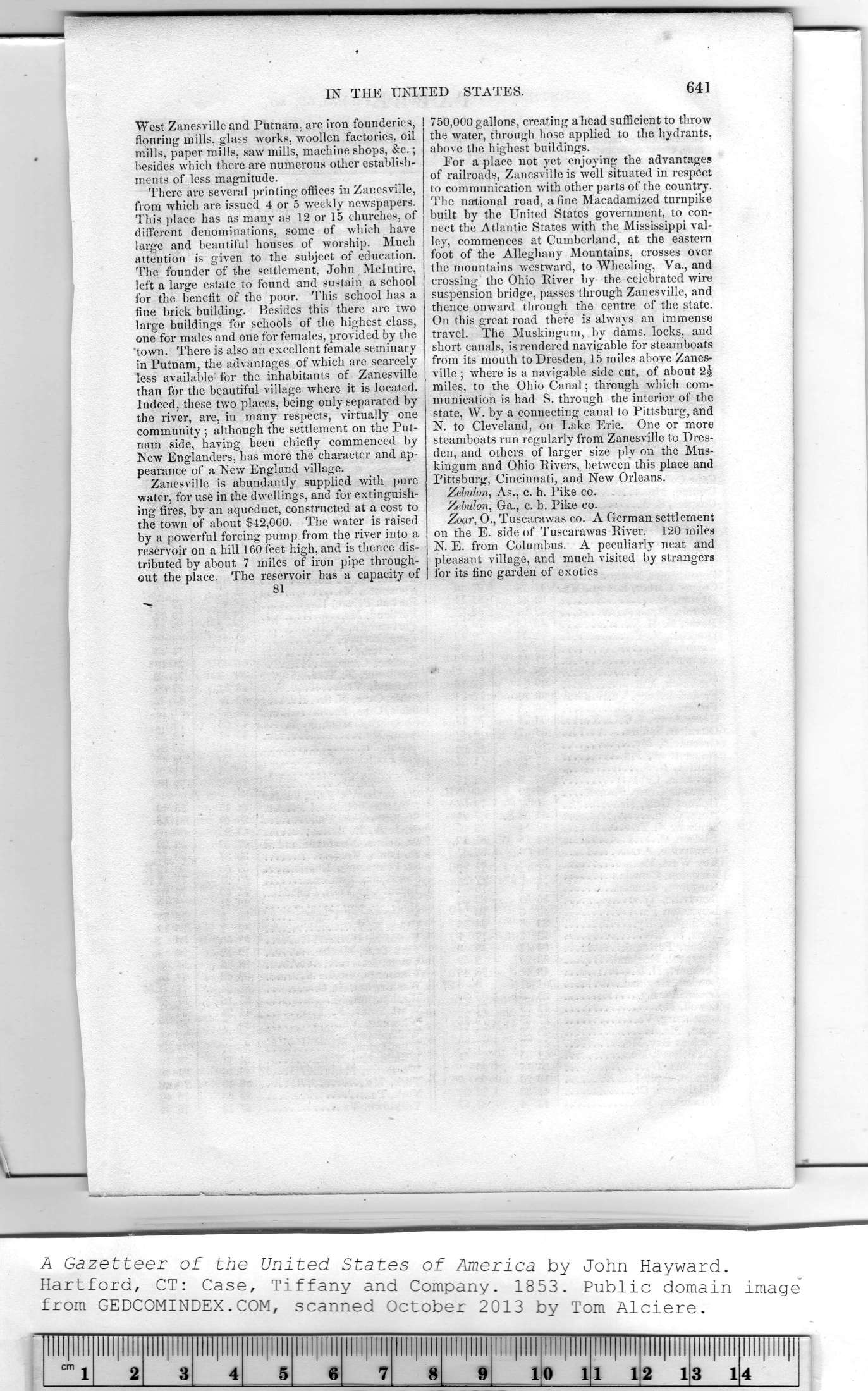|
West Zanesville and Putnam, are iron founderies,
flouring mills, glass works, woollen factories, oil
mills, paper mills, saw mills, machine shops, &c.;
besides which there are numerous other establish-
ments of less magnitude.
There are several printing offices in Zanesville,
from which are issued 4 or 5 weekly newspapers.
This place has as many as 12 or 15 churches, of
different denominations, some of which have
large and beautiful houses of worship. Much
attention is given to the subject of education.
The founder of the settlement, John Mclntire,
left a large estate to found and sustain a school
for the benefit of the poor. This school has a
fine brick building. Besides this there are two
large buildings for schools of the highest class,
one for males and one for females, provided by the
town. There is also an excellent female seminary
in Putnam, the advantages of which are scarcely
less available for the inhabitants of Zanesville
than for the beautiful village where it is located.
Indeed, these two places, being only separated by
the river, are, in many respects, virtually one
community; although the settlement on the Put-
nam side, having been chiefly commenced by
New Englanders, has more the character and ap-
pearance of a New England village.
Zanesville is abundantly supplied with pure
water, for use in the dwellings, and for extinguish-
ing fires, by an aqueduct, constructed at a cost to
the town of about $42,000. The water is raised
by a powerful forcing pump from the river into a
reservoir on a hill 160 feet high, and is thence dis-
tributed by about 7 miles of iron pipe through-
out the place. The reservoir has a capacity of
81
750,000 gallons, creating ahead sufficient to throw
the water, through hose applied to the hydrants,
above the highest buildings. |
Eor a place not yet enjoying the advantages
of railroads, Zanesville is well situated in respect
to communication with other parts of the country.
The national road, a fine Macadamized turnpike
built by the United States government, to con-
nect the Atlantic States with the Mississippi val-
ley, commences at Cumberland, at the eastern
foot of the Alleghany Mountains, crosses over
the mountains westward, to Wheeling, Va., and
crossing the Ohio Biver by the celebrated wire
suspension bridge, passes through Zanesville, and
thence onward through the centre of the state.
On this great road there is always an immense
travel. The Muskingum, by dams, locks, and
short canals, is rendered navigable for steamboats
from its mouth to Dresden, 15 miles above Zanes-
ville ; where is a navigable side cut, of about 2^
miles, to the Ohio Canal; through which com-
munication is had S. through the interior of the
state, W. by a connecting canal to Pittsburg, and
N. to Cleveland, on Lake Erie. One or more
steamboats run regularly from Zanesville to Dres-
den, and others of larger size ply on the Mus-
kingum and Ohio Bivers, between this place and
Pittsburg, Cincinnati, and New Orleans.
Zebulon, As., c. h. Pike co.
Zebulon, Ga., c. h. Pike co.
2k>ar, O., Tuscarawas co. A German settlement
on the E. side of Tuscarawas Biver. 120 miles
N. E. from Columbus. A peculiarly neat and
pleasant village, and much visited by strangers
for its fine garden of exotics |
